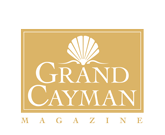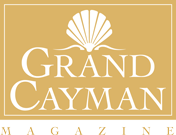It might seem hard to believe now – with so many Italian restaurants to choose from – but 30 years ago, finding good Italian food and wine on Grand Cayman wasn’t easy.
A few Italian restaurants had popped up over the years, but they tended to be short-lived and focused on the spaghetti-and-meatballs-type of Italian cuisine typical in the United States at the time. There were limited selections of Italian wines available then, and what was here tended to be inexpensive Chiantis, sometimes in bottles wrapped in straw.
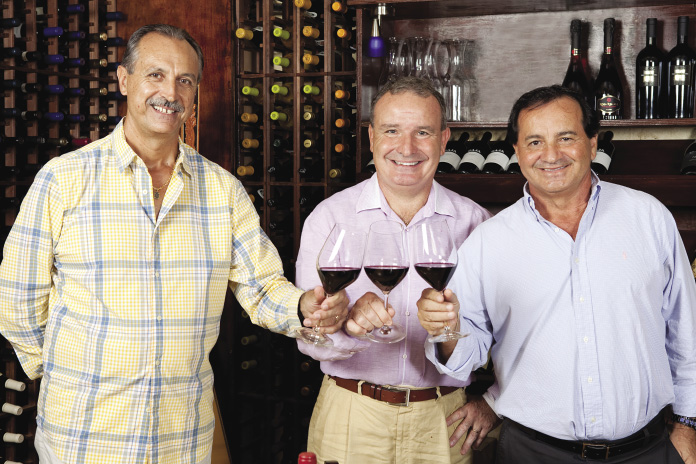
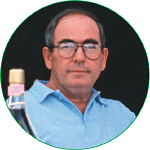
That began to change in the mid-1980s when four young Italian restaurant managers immigrated to Grand Cayman. The four – Vico Testori, Giuseppe Gatta, Tony Crescente and Marino Flelli – came from different parts of Italy, but all had the desire to bring authentic Italian food to the Cayman Islands.
Together, these men were instrumental in establishing Italian cuisine as a mainstay offering in Grand Cayman’s restaurant scene. Over the years, they have helped improve restaurant quality and service levels on the island through the recruitment of numerous restaurant industry professionals, including chefs, waiters and managers, and they helped create the demand for the high-quality Italian wines and food products now available on Grand Cayman.
History
Originally from the area near Lake Como in northern Italy, Vico Testori worked in restaurants in several countries outside of his home country.
He also spent time working on cruise ship restaurants, which is how he discovered the Cayman Islands. In late 1984, he was offered a job by Villas Pappagallo developer Peter Fedele to manage his new restaurant, Ristorante Pappagallo, in the Barkers area of West Bay. Thirty years later, Testori is still there, now as owner of the restaurant.
When he started at Ristorante Pappagallo, there were only a handful of good restaurants on Grand Cayman at the time, and none of them was serving Italian food.
“We decided to do strictly Italian food and offer a proper dining experience,” he says. “We had waiters in tuxedos… we tried to bring some elegance to the island.”
Fedele says that he fondly referred to the staff Testori put together for the opening of the Ristorante Pappagallo as the “original Dream Team.” “They were the most polished and professional waiters that the island had ever seen,” he says.
Only months after Ristorante Pappagallo opened, Giuseppe Gatta and Tony Crescente arrived in the Cayman Islands in 1985 to work at the Le Diplomat, a very expensive gourmet French restaurant that featured amenities like crystal glassware and fine china.
“The island wasn’t ready for it,” says Gatta, noting that the population couldn’t sustain a small, high-end restaurant that only had one seating a night.
After a year, Gatta left. “I had the opportunity to open my own place.” That restaurant was Primavera, in the Islander Complex on Lawrence Thompson Boulevard, where he worked for three years before moving on to Periwinkle Restaurant on West Bay Road, where Decker’s is now. In 1992, Gatta had the opportunity to become one of the owners at the Lighthouse Restaurant, where he still is today.
After Le Diplomat, Tony Crescente went on to manage the L’Escargot French restaurant that was located in the Treasure Island Resort. A few years later, he moved on to the Island Taste Restaurant, on the site that became the Hard Rock Café.
Although Island Taste was known for patties and local food, Crescente’s second-floor balcony location at Island Taste featured southern Italian cuisine, the kind Crescente grew up with in Calabria.
After five years at Island Taste, he opened Casanova Restaurant. The iconic George Town Harbor Italian restaurant has been open ever since — except for the three years it took to rebuild after being destroyed by Hurricane Ivan in 2004 – even while many other George Town restaurants have closed.
“I feel like Cochise; the last one standing,” he says with a laugh.
Of the four restaurateurs, Marino Flelli actually came to Grand Cayman first – way back in 1969 – but left the following year and spent 14 years subsequently working in the restaurant business in Bermuda and the United States. Upon returning to the Cayman Islands in the mid-1980s, Flelli, who is originally from the Lago Maggiore area of northern Italy, opened Bella Capri on Canal Point Drive.
With him at Bella Capri was another of Cayman’s Italian restaurant pioneers, the late Eduardo Avelli, who came to Cayman from the Naples area of Italy via Canada. Avelli was involved in the start-up of several Italian restaurants on Grand Cayman, including the one that still bears his name, Eduardo’s.
Bella Capri enjoyed a long run of almost 18 years, until the damage caused by Hurricane Ivan proved too much to overcome. Flelli also operated the Portofino Italian seafood restaurant in East End for 13 years, before leasing it out in 2011, when it became Tukka.
Today, Flelli still owns and operates Gateway to India in the same building where Bella Capri used to be.
Cuisine
Each of the Italian restaurateurs brought with him a sense of the cuisine from the area in which he was raised.
 Instead of offering the popular Italian cuisine favored by North Americans, the menu at Gatta’s Primavera Restaurant reflected northern Italy, which was what Gatta knew best, having grown up in Caravaggio, near Milan.
Instead of offering the popular Italian cuisine favored by North Americans, the menu at Gatta’s Primavera Restaurant reflected northern Italy, which was what Gatta knew best, having grown up in Caravaggio, near Milan.
“We did seafood and meats like braised beef, roasted chicken with risotto, leg of lamb and leg of veal,” he says. “A lot of people didn’t associate Italian food with seafood even though three quarters of the country is surrounded by water.”
At Bella Capri, Flelli broke new ground in Cayman with several of his dishes, and the restaurant was the first to serve a number of menu items like Caprese salad, gnocchi, bruschetta and tiramisu.
The menu at Ristorante Pappagallo has always reflected northern Italy and the restaurant is known for its homemade pastas. Because so many Italian-born people work at the restaurant, it’s easy for the dishes to be authentic.
“Anybody can try to cook Italian, but if you grow up there, you know the flavors and you can tell a plate is good just by looking at it,” Testori says.
Today’s menu at Ristorante Pappagallo has evolved to offer what Testori calls an Italian/Caribbean fusion – there’s a jerk pork chop on the menu – and he admits that there are some Italian dishes over the years that just didn’t sell.
“Sometimes the boundary is limited to what people are willing to experience,” he says.
Gatta has noticed the same thing.
“What is interesting is that the American public – which makes up about 85 percent of our clientele – if they go to Italy, they will take whatever is served to them with no question. But here, they wanted cheese with seafood pasta and pastas smothered in sauces.”
Getting the Italian chefs to serve what the North American consumers were requesting back in the late ’80s and early ’90s was sometimes a challenge, said Flelli.
“Most of the chefs came from Italy and I had a hard time getting them to make spaghetti and meatballs,” he says. “They would say, ‘I’m not making any meatballs.’ ”
Things have changed in recent years though, Gatta says.
“The American clientele has become more refined in the last 10 to 15 years,” he says, noting that they are more willing than ever to experience new dishes. “Even the Italian-American cuisine restaurants are expanding their menus.”
Although the Lighthouse Restaurant’s menus over the years have maintained several authentic Italian dishes and flavors, they are balanced by crowd-pleasing selections, often with a Caribbean flair.
“We know the game,” he says. “We have to give the customers what they want.”
For Crescente, who came from the south, his menus at Casanova feature the flavors for which Italy is most famous.
“We’ve basically offered classic southern Italy cuisine: olive oil, herbs, tomatoes and garlic.”
However, in true Italian hospitality fashion, Casanova allows guests to ask for items off the menu.
“My idea is to give the people what they want and more,” he says. “Our motto is ‘What can we do for you?’ I think that’s why I’m still open today and busier than a lot of other restaurants.”
Service
Giving customers what they wanted in food was only one part of the hospitality excellence equation the Italians brought to Cayman. They also brought with them professional waiters, which raised the customer service bar to new levels.
For Italians, becoming a waiter is a career choice, said Gatta, who like all the others, worked as a waiter himself.
“You don’t look at is as service, you look at it as a career,” he says. “We grew up in Italy as youngsters with the idea that you love to work in restaurants.”
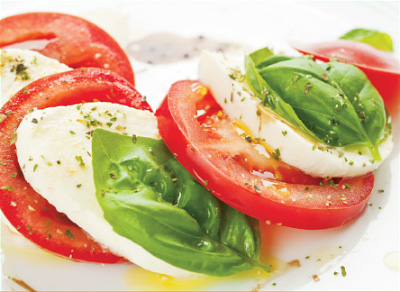 Testori says there’s a big difference in the quality of wait staff from Italy and that from North America, where waiters tend to learn on the job.
Testori says there’s a big difference in the quality of wait staff from Italy and that from North America, where waiters tend to learn on the job.
“Waitering in Italy not a part-time job; it’s a profession,” he says. “It takes three to five years in Italy to become a waiter because you have to train on everything.”
Being a good Italian waiter involves more than just knowing how to serve.
“You have to have flair and commitment and enjoy what you’re doing,” says Gatta. “You have to please the people and understand that people go to restaurants to celebrate something, whether it’s a birthday, anniversary or just the end of a long day at work. On a daily basis, waiters have to analyze the clientele so that they can interact with them.”
Crescente says good service is essential to survival on Grand Cayman today, where there are now more than 200 restaurants.
“The market is very competitive and you can’t afford to be mediocre,” he says. “With the way social media is used, if you mess up tonight, the next morning the rest of the world knows about it.”
However, service goes beyond the staff and the way they interact with guests. “Presentation [of dishes] is much more important these days,” says Testori.
Part of good presentation for Flelli has meant using linen tablecloths, which he has always had at all of his restaurants.
Products
One of the key benefits to having so many good Italian restaurants owned and operated by Italians has been an increased demand in products from Italy, starting with wine.
Testori says the wine situation on Grand Cayman was bleak when he started at Ristorante Pappagallo.
“There were no good wines here, really,” he says. “You had Paul Masson and Blue Nun and wines like that. It was hard to make a wine list with more than five Italian wines. All the restaurants had the same wine list.”
In his early days here, Testori said he found it surprising that people didn’t drink much wine with dinner.
“People were drinking mixed drinks with meals,” he says. “Coming from Italy, I couldn’t understand it. Now, everybody drinks wines.”
Eventually, the restaurateurs approached distributor Jacques Scott and Company and asked for it to bring in more Italian wines.
Jacques Scott secured the distribution rights for a number of major Italian brands, including Antinori, Santa Margherita, Banfi, Cavit, Bertani, Marchese di Barolo and many more.
Some of the restaurateurs also started bringing in some wines directly from Italy, supplementing what the distributors were importing.
Today, the selection of wines available in Cayman is world class.
“It’s amazing,” says Testori. “You can get anything you want now. I still bring in some wines, mainly wines that are allocated or have small productions, but you can mostly find everything on island now.”
In addition to wines, the Italians were also instrumental in bringing another beverage about which they’re passionate: coffee.
“I bought an espresso machine and was the first one to serve espresso and cappuccino on the island,” says Flelli.
Crescente has watched as the appreciation for wine and coffee has grown in Cayman.
“People have become much more knowledgeable and those two things have really evolved,” he says. “Coffee has improved a lot here.”
Cayman’s Italian restaurants also helped create a demand for other Italian products. For example, Kirk Market now carries dozens of high-quality specialty products made in Italy, including canned tomatoes, dried pastas, olive oils, vinegars, cheeses and cured meats.
Keys to success
Despite all of the competition and the economic downturn, Cayman’s long-established Italian restaurants have not only held market share, they have flourished.
 Crescente believes one important factor is that he is a hands-on owner, just as Flelli, Testori and Gatta are.
Crescente believes one important factor is that he is a hands-on owner, just as Flelli, Testori and Gatta are.
“The most successful businesses are run by the owner,” he says. “The key is you have to be close to your guests, although location certainly helps.”
One of the things that has helped Casanova tremendously through the years is a loyal resident following.
“The local business has been a key to my longevity,” Crescente says, adding that he knows many of his local restaurant patrons. “I’ve been here for 30 years, so I know the families, I know the kids.”
Having good and reliable staff is also very important, and Crescente has been blessed with the fortune of having his brothers work at Casanova.
“You have to surround yourself with good people,” he says, noting that one of his employees has worked at Casanova for 13 years, while several others have been there six years or more. The situation is almost the same at Ristorante Pappagallo, where many of the staff members have been at the restaurant for a decade or more.
Friends
Although Flelli, Testori, Gatta and Crescente are all fighting for a share of a relatively small restaurant market, they are friends and have supported each other, Testori says.
“We all helped each other and spent time with each other,” he says. “We don’t see each other as competitors. We’ve spent Sundays together and compared notes.”
Gatta says there’s mutual respect between the four.
“We grew together, all of us,” he says. “We didn’t step on each other’s toes and as a matter of act, we helped each other out.”
Another important reason for success is simply the popularity of Italian cuisine.
“Italian food is the one you can have every day and not get bored,” Testori says. “There are 21 regions in Italy and each one has its own style of cooking.”
“Italian food is like cherries,” Crescente says, “Everybody likes it.”
There are a number of reasons why Flelli, Testori, Gatta and Crescente have been successful restaurateurs in Cayman, but ultimately passion for doing what they do is a vital aspect.
“Pappagallo was successful because of the passion of Vico Testori,” says Peter Fedele, the man who hired him 30 years ago. “The fact that Pappagallo is still successful today is a credit to his abilities.”
Working long hours at the restaurant is a given for all of Cayman’s Godfathers of Italian cuisine. Crescente says he normally only takes “two to three days off here and there,” although he did take 10 days off to attend his mother’s 80th birthday in Italy this year.
“I’m [at the restaurant] every day,” he says without an ounce of complaint, but with a ton of pride for his contribution to the high quality of Grand Cayman’s restaurants.
“A lot of people have no idea how good, for a small place, we have it here.”
Flelli, who is now in his 70s, has made some profitable real estate investments over the years and really doesn’t need to work anymore. But he still comes into the Gateway of India regularly because he enjoys it.
“I can’t stay home at night,” he says. “I don’t have to go, but I go. I grew up with the restaurant business, and I’ve always been in the restaurant business. I have no
regrets.”
















